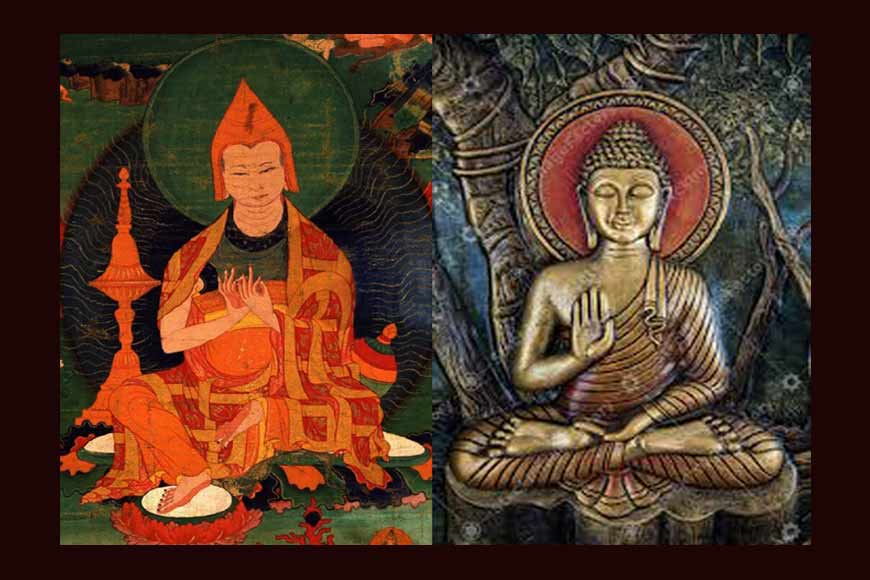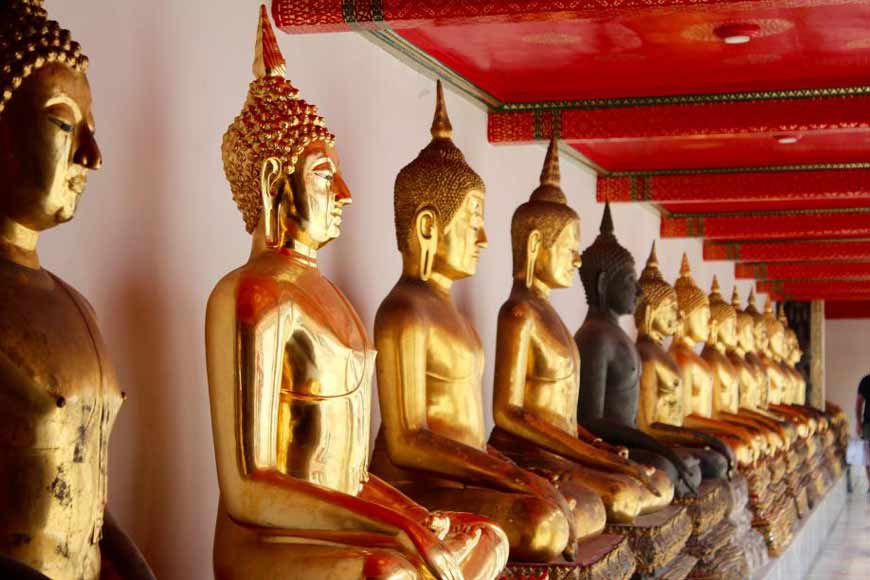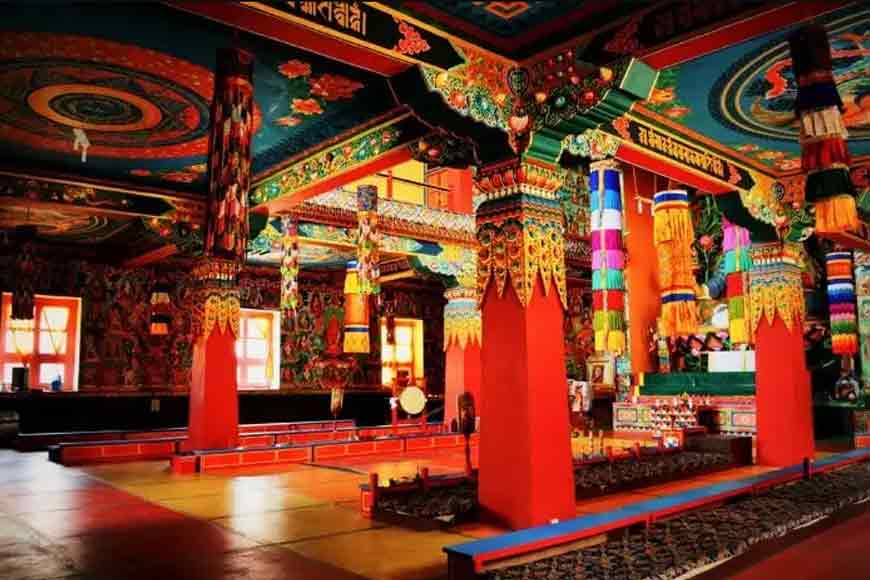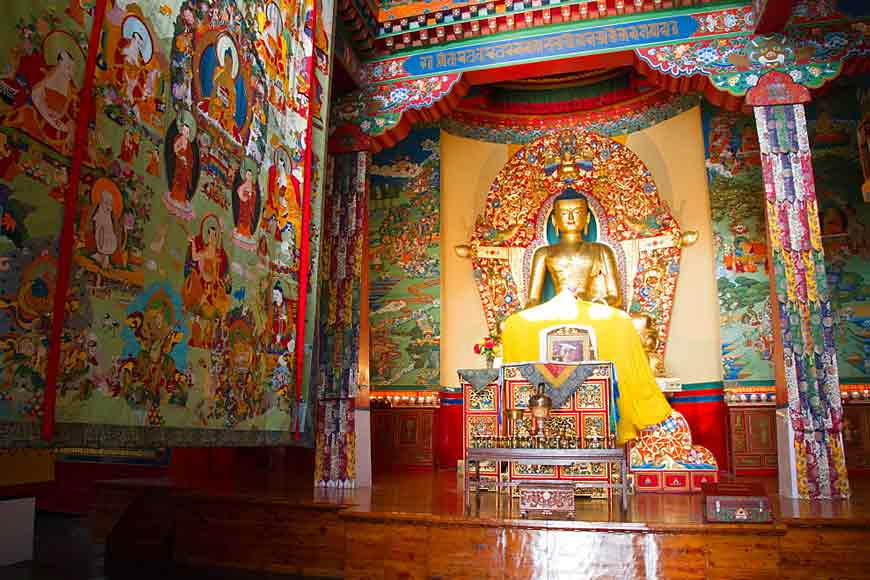Ancient Bengal’s phenomenal role in spreading Buddhism in Tibet - GetBengal story

Atiśa Dīpankara and Siddhartha Gautama , widely known as Lord Buddha
Buddhism is one of the world's oldest religions, developed in India in the sixth century BC around the teachings of Siddhartha Gautama, the Buddha. The success of the Buddha's missionary activities during his lifetime and afterward as well as the thriving of Buddhism both as a religion and civilization in different parts of India were largely due to the patronage of kings such as Bimbisara, Ashoka, Kaniska down to the Palas and Chandras of Bengal in the 12th century AD. Although not all monarchs patronized Buddhism, and some of them were even hostile to its progress, Buddhism nevertheless was able to prosper and flourish in Bengal over a period of more than 800 years.
Bengal was a bastion of early classical Buddhism as a socio-cultural force and the last stronghold of Indian Buddhism until the 12th century AD, despite its disappearance from other parts of the subcontinent. During the 7th-8th centuries AD, Bengal was the center of Buddhist expansion in India and also a key force in the development of Tibetan Buddhism , an off-shoot of Mahayana and Tantric Buddhism . Tantric Buddhism is a composite of mystic and esoteric practices, which are of distinctively Bengali origin. Ancient Bengali Buddhists are regarded as the patrons of early Tibetan Buddhism.
 Early classical Buddhism was strongly practiced in Bengal
Early classical Buddhism was strongly practiced in Bengal
The Ancient Bengal region was known for its powerful kingdoms. After the Guptas, King Shashanka of Gauda (7th century AD) rose to prominence and briefly established a new era that gave Bengal a distinct and separate identity. Shashanka was a devout Hindu who did not tolerate other religions. Barely eight months after Shashanka died, Gauda was divided between Harsha and Bhaskaravarman of Kamarupa, the latter even managing to conquer Karnasuvarna. However, the order was restored when Gopala ascended the throne of Gauda with the help of local chieftains in 750 AD. Gopala’s successors, Dharmapala and Devapala, continued his work with great success. All three of these prominent ancient Bengali Indians were Buddhists and they all promoted this philosophy on a massive scale during their rule.
The Pala period is considered one of the golden eras of Bengal’s history. The Palas were fundamental in the spread of Buddhism in India. They built monasteries, encouraged discussions, and offered support when adherents from outside their dominions came to study the scriptures. The ‘Charyapada’ written by Buddhist Mahasiddhas of tantric tradition in Proto-Bengali language during the Palas laid the basis of several eastern Indian languages. The Palas, especially Dharmapala and Devapala built grand temples and monasteries, including the Somapura Mahavihara and Odantapuri, and patronized the great universities of Nalanda and Vikramashila. According to historical evidence, the Palas followed the Mahayana and the Tantric (Vajrayana) schools of Buddhism and Tibetan Buddhism developed as a branch of the Mahayana and Tantric Buddhism. In the 8th century AD, the reigning Pala monarch patronized the legendary Indian Buddhist mystic Guru Padmasambhava or Guru Rimpoche and arranged for his visit to Tibet at the invitation of King Trisong Detsen. Guru Rimpoche introduced Tantric Buddhism to Tibet and established the first Buddhist monastery there. In the same century, Śantaraksita, another renowned Buddhist master, presumably also went to Tibet to establish Buddhism there.
Around 988 AD, an ancient Indian Bengali known as Tilopa, who was likely a prince, renounced his kingdom and wandered across India in search of enlightenment. He eventually settled in Nepal where he experienced nirvana or ‘siddhi’ while studying under another master. Tilopa, which translates as "the tahini maker" in a local Bengali language, was a famously hard-working Buddhist saint. At some point in his long search for knowledge, he made a living from grinding sesame seeds. Tilopa soon accepted a disciple called Naropa who became part of Tilopa’s school of philosophy. Just like his master, Naropa was born to a royal Bengali family.
 Buddhist monastery
Buddhist monastery
From an early age, Naropa showed an independent streak, hoping to follow a career of study and meditation. Succumbing to his parents' wishes, he agreed to an arranged marriage but after eight years, both agreed to dissolve their marriage and become ordained. At the age of 28, Naropa entered the famous Buddhist University at Nalanda where he studied both Sutra and Tantra. He gained the reputation of a great scholar and faultless debater, essential at that time as the tradition of debate was such that the loser automatically became a student of the winner. He eventually gained the title "Guardian of the Northern Gate", engaged in many debates, taught, and won many students.
However, legend has it that at the summons of a ‘Dakini’ (a woman siddhi or a spirit), who explained to him the importance of meditation and ‘dhyan’ over mundane subjects, Naropa set out to find Tilopa in order to attain the highest form of enlightenment.
Later on, Naropa transmitted all his teachings to his disciples. Among them was a student called Marpa who brought all those lessons to Tibet. Marpa accomplished all the tenets of Buddhism, which enabled him to attain moksha, various forms of emancipation, enlightenment, liberation, and release. After the completion of his education, Naropa sent Marpa as a regent of Buddhism to Tibet to bring peace to the people there. The Tibetans now consider Naropa as one of the highest Buddhist Mahasiddhas. He is also revered as a central figure of the Kagyu school of Tibetan Buddhism. Legend also says that the famous Buddhist Yogini Niguma was Naropa’s sister, but no evidence survives to prove this.
However, Atiśa Dīpankara Śrījñānais (982–1054), a contemporary of Naropa, is considered one of the greatest ancient masters of early Buddhism. No Indian who visited Tibet in the past thousand years had a greater impact on Buddhism there than Atiśa Dīpankara. He was a Buddhist monk, world traveller, devout practitioner, philosopher, and brilliant synthesizer who was heir to most of the great ideas and practices of later Indian Mahāyāna Buddhism.
Few figures in the history of Buddhism in Tibet have had as far-reaching and profound an influence as Atiśa Dīpankara. Atiśa was born to a royal family in Vajrayogini Village in the historic region of Vikrampur, in the present-day Munshiganj District of Bangladesh. His parents, Kalyanasri and Prabhabati named him Chandragarbha. From a young age, he displayed a great interest in acquiring knowledge. At the age of 19, he was ordained as a novice monk and given the name Dipankar Srigyan. He studied under Jetari, a great virtuoso of the time, and mastered the disciplines of astronomy, logic, grammar, literature, meditational sciences, art, and music when he was still a young man. He also mastered the teachings of Vaishnavism, Tantric Hinduism, and Shaivism. At the age of 29, he took full monastic ordination under Acharya Shilarakshita (the chancellor and an eminent scholar at Odantapuri Mahavihara in Magadha, the second oldest university in ancient India), and because of his outstanding knowledge and wisdom was named Atish Dipankar Srigyan, meaning “glorious wisdom source of light.”
 Buddhism, one of the oldest religions in the world
Buddhism, one of the oldest religions in the world
In 1024, King Mahipala I (988–1038AD) made him chancellor of the Buddhist university at Vikramshila, in Bhagalpur District in today’s Bihar State. From there he went to Tibet, where Buddhism was in decline, at the invitation of the Tibetan king, arriving there in 1042. Atish would spend the rest of his life in Tibet, translating, writing, and compiling Buddhists texts. While some of his writings have been preserved there, his earlier writings in Sanskrit and Bengali are unfortunately no longer in existence.
Atiśa was a tantric Buddhist master during Vajrayana Buddhism’s flowering in India and travelled extensively, eventually spending the remaining 12 years of his life revitalizing Buddhism in Tibet. Revered by all the schools of Tibetan Buddhism, Atiśa and his students founded what came to be known as the Kadam School, whose teachings have influenced countless Buddhist masters. The Geluk in particular, the school of the Dalai Lamas, preserves these teachings, which is cherished by all major traditions.
Although Atiśa was an influential practitioner and scholar of Tantra, he is best known for introducing many of the core Mahayana teachings that are widely practiced throughout the Tibetan Buddhist world, including the Stages of the Path to Awakening and Mind Training (lojong), as well as having contributed to highly influential commentaries on Madhyamaka that synthesize various schools of thought. He was instrumental in spreading the message of peace and non-violence to Tibet, Sumatra and various other parts of India and Asia.
Altogether, Atisha spent 17 years in the Land of Snow until his death in 1054 CE at the age of 72. Atisha’s body was embalmed and enshrined at Nyetang and, two years later (1056 CE), the revered layman, Dromtonpa established the sequestered Radreng Monastery, the most important center of the Kadam tradition which passed on his master’s lineages.










